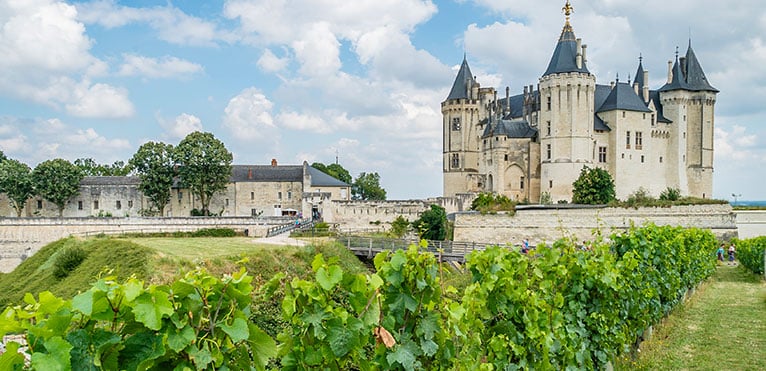
Contents
Côte-Roannaise is a wine appellation in the Loire Valley, in the heart of the Roannais region. Recognized as an Appellation d’Origine Contrôlée since 1994, the vineyard produces red and rosé wines. Annual production is 11,000 hectoliters, of which 15% are rosés.
Côte-Roannaise, from table wine to label wine
The vineyard of Gallo-Roman heritage although the first text mentioning it dates back to 970 present-day commune of Villerest. In the Middle Ages, the vineyard expanded under the impetus of the Benedictines of Ambierle and the Counts of Forez. The wine trade developed particularly in the 17th and 18th centuries, thanks to improved river transport via the Loire. to serve the cities of Nantes and Paris. The vineyard declined in the 19th and 20th centuries due to the phylloxera crisis, competition from wines from the south of France and the rural exodus.
The awarding of the VDQS label in 1955 marked the beginning of a shift towards the production of quality wines. although the majority production remains recognized in table wine. The turning point came in the 1980s when more and more winegrowers are turning to quality and enable the vineyard to obtain in 1994 the AOC. The quantity of labelled wine thus from 5,000 to 10,000 hectolitres from the 1990s to the 2000s.
The AOC Côte-Roannaise terroir lies on a mild granite soil.
The 215-hectare vineyard is located to the west of the commune de Roanne, au lower mountains de la Madeleine, heart of the Massif Central. 14 communes in the region have AOC soils five of which (Saint-Haon-le-Vieux, Saint-André-d’Apchon, Renaison, Ambierle and Villemontais) concentrating near 90% of hectares planted.
The vines, planted between 350 and 550 meters above sea level, face east and benefit from a temperate oceanic climate with a mountain influence.
The soils, which are very sandy and draining, are composed of granitic arenas. The ensemble overlooking the upper of the vineyard is ancient soils. Volcanic tuffeau can be found to the south of the vineyard, microgranites in the center, and granites to the north of the terroir.. The lower part of the vineyard is composed of feldspathic sands. dating back to the Oligocene period.
Some growers also cultivate grape varieties for the production of white wines such as Chardonnay and Viognier, which are classified as Vins de Pays d’Urfé. Sparkling and sweet wines are also produced and recognized as vins de pays.
AOC Côte-Roannaise highlights the originality of its terroir
Gamay noir is the region’s main grape varietyknown locally as “Saint-Romain”.. It contributes to an average annual production of 9,500 hectolitres of red wine and of 1,500 hectolitres of rosé. Gamay noir is the only grape variety used to make AOC red and rosé wines.
The reds stand out for their elegant elegant, lively red with violet highlights violet reminiscent of ruby. The vintages of old vines present shades more darker and denser. Rosé wines have a pink salmon-pink color bright and limpid..
On the nose, the red ones exude a a multitude of fragrances where Fruity notes such as blackcurrant, raspberry, cherry, blackberry or wild strawberry, enhanced withaccents evoking spices or liquorice. Rosé wines are reminiscent of cherry or blackcurrant and can combine notes of exotic fruit to aromas of local fruits such as pear or apple.
At the palace, red wines mingle softness, harmony and fruity flavor with silky tannins. The age of the vines, the date of harvest and the length of the vatting period all play a role. two categories of wines, on the one hand sweet and fruity, on the other hand, cuvées spicier, sometimes minerals, including the finely rustic character brings out the singularity local winegrowing. Rosé wines are sparkling and fruity, bringing freshness and vivacity to the palate.
Red wines can be kept for 1 to 3 years, while rosé wines are best drunk young.
A Côte-Roannaise is the ideal companion for aperitifs and charcuterie.
Red wines go well with charcuterie, white meats and cheeses such as Fourme de Montbrison. Rosés are ideal with aperitifs, charcuterie and grilled meats. Tasting temperature is 14°C for red wines and between 8 and 10°C for rosés.
Outstanding vintages in the Côte-Roannaise appellation
The Côte-Roannaise red stands out as an exceptional vintage for 2005. 1995, 2001 and 2002 were all excellent vintages, and 2000 was a great vintage.
The Côte-Roannaise rosé boasts the excellent vintages of 1995 and 2002. The great vintages are 1996, 1997, 2001 and 2005.
Côte-Roannaise Domaines perpetuate the family winemaking tradition
Domaine des Pothiers
Located in the southern part of the appellation in the commune of Villemontais, The Domaine consists of 21 hectares of vines. A descendant of several generations of winegrowers in the Pothier family, Romain Paire took over the estate in 2005, modernizing it with new methods of vatting and converting to organic and biodynamic viticulture. The grape varieties grown are Gamay Saint-Romain and Pinot Gris, aged in concrete vats, wooden truncated-cone vats, barrels or foudres.
Domaine Vial
Philippe and Jean-Marie Vial come from generations of winegrowing families, and took over the family estate some twenty years ago, restructuring and modernizing the business. After several extensions to the estate, the two brothers now cultivate 10 hectares of vines, including 9 hectares of Gamay and 1 hectare of Chardonnay and Viognier white varieties. In particular, they own the Bouthéran hillside, one of the appellation’s most renowned parcels, thanks to its exceptional exposure and terroir. Philippe and Jean-Marie produce, vinify and market their entire production.